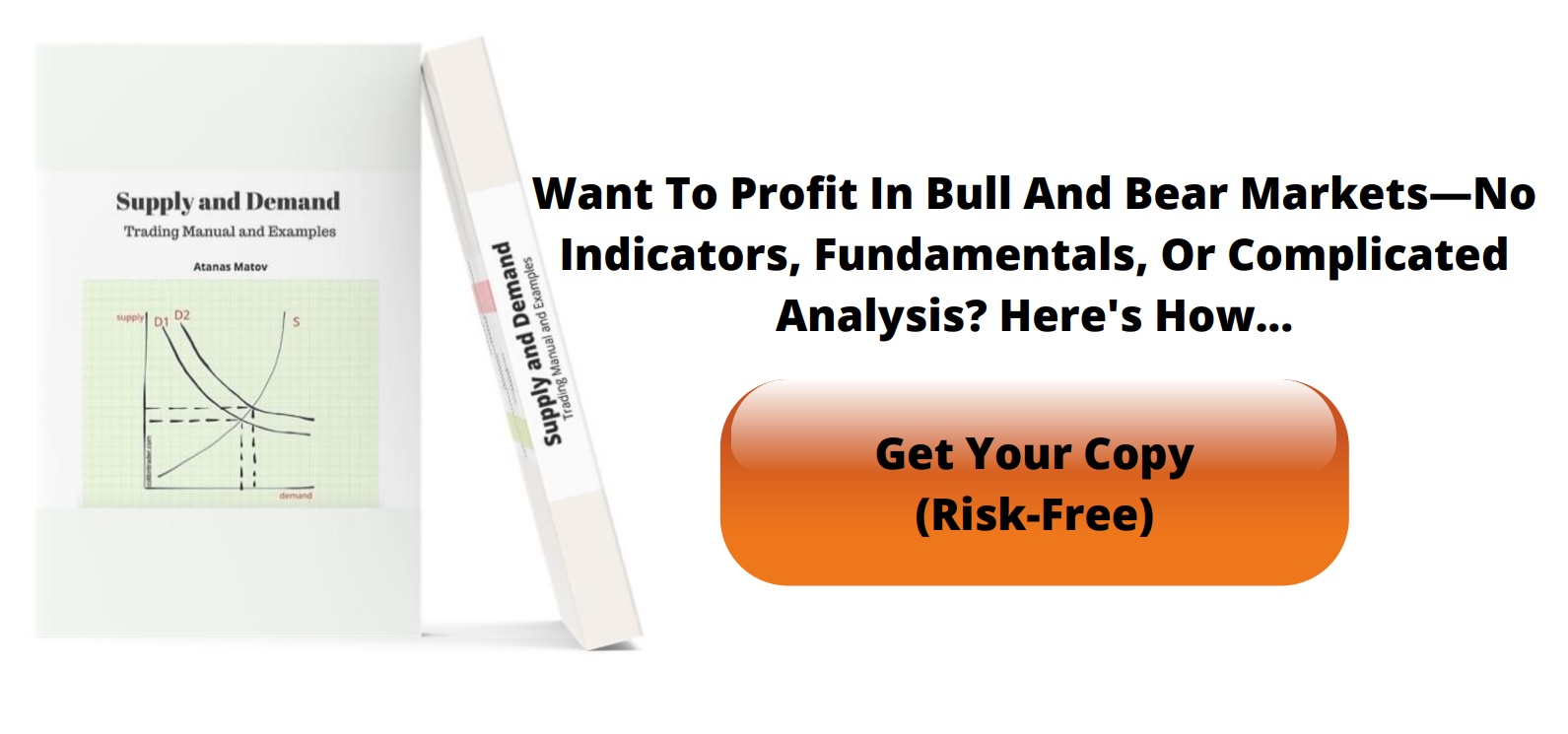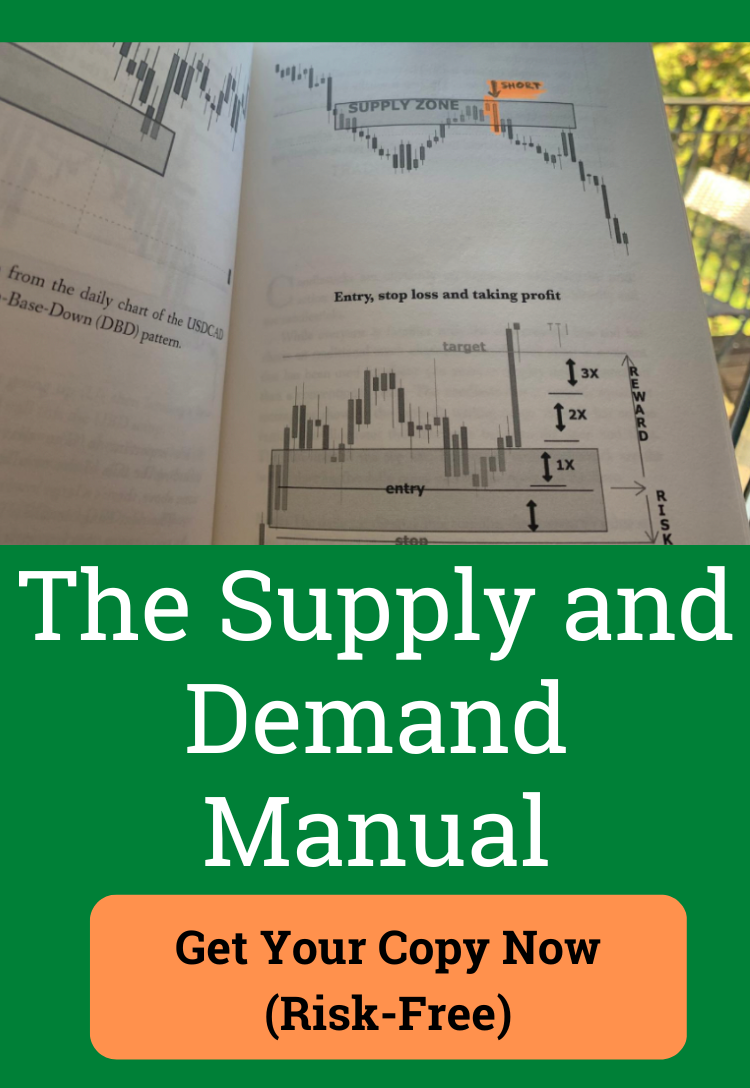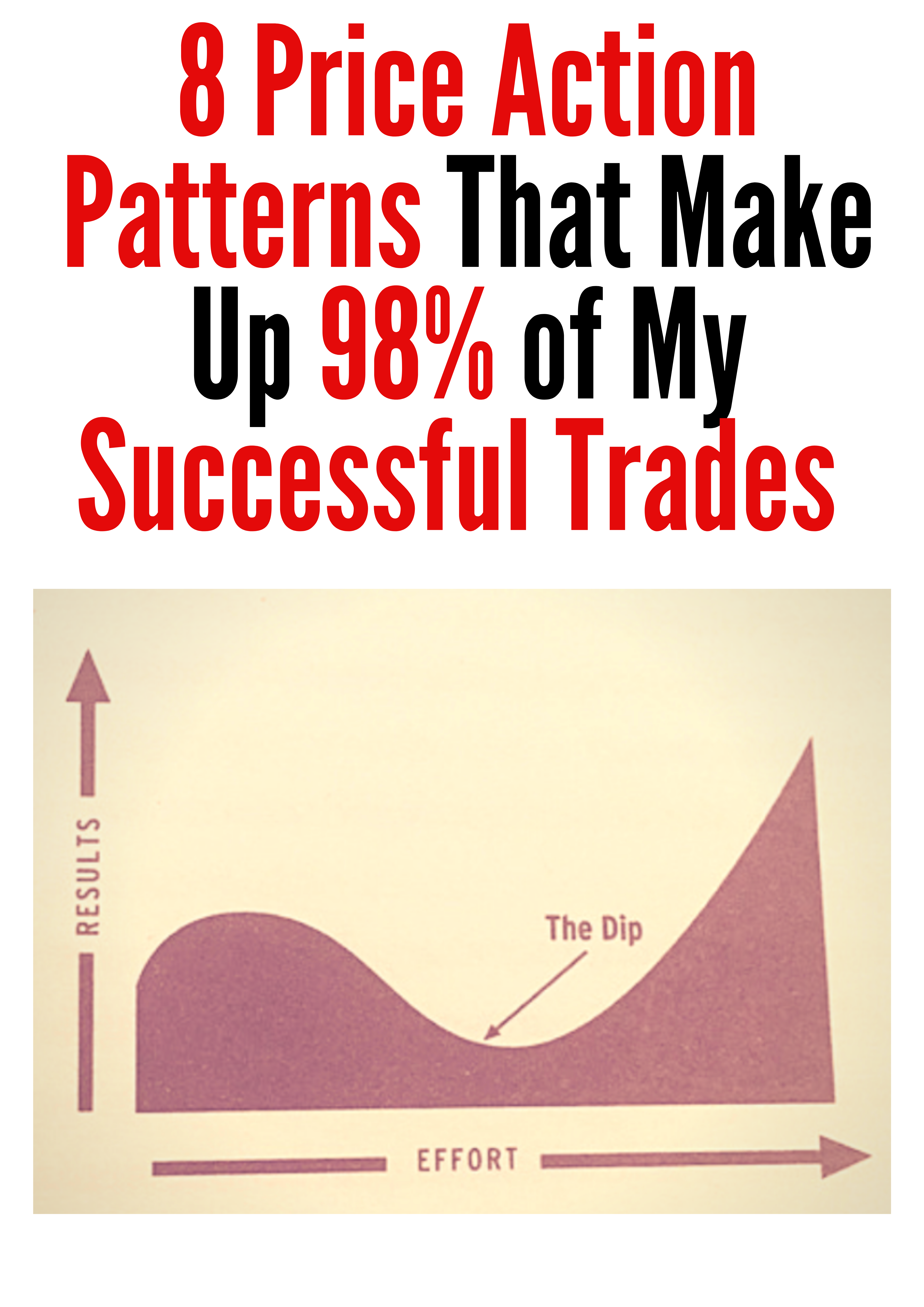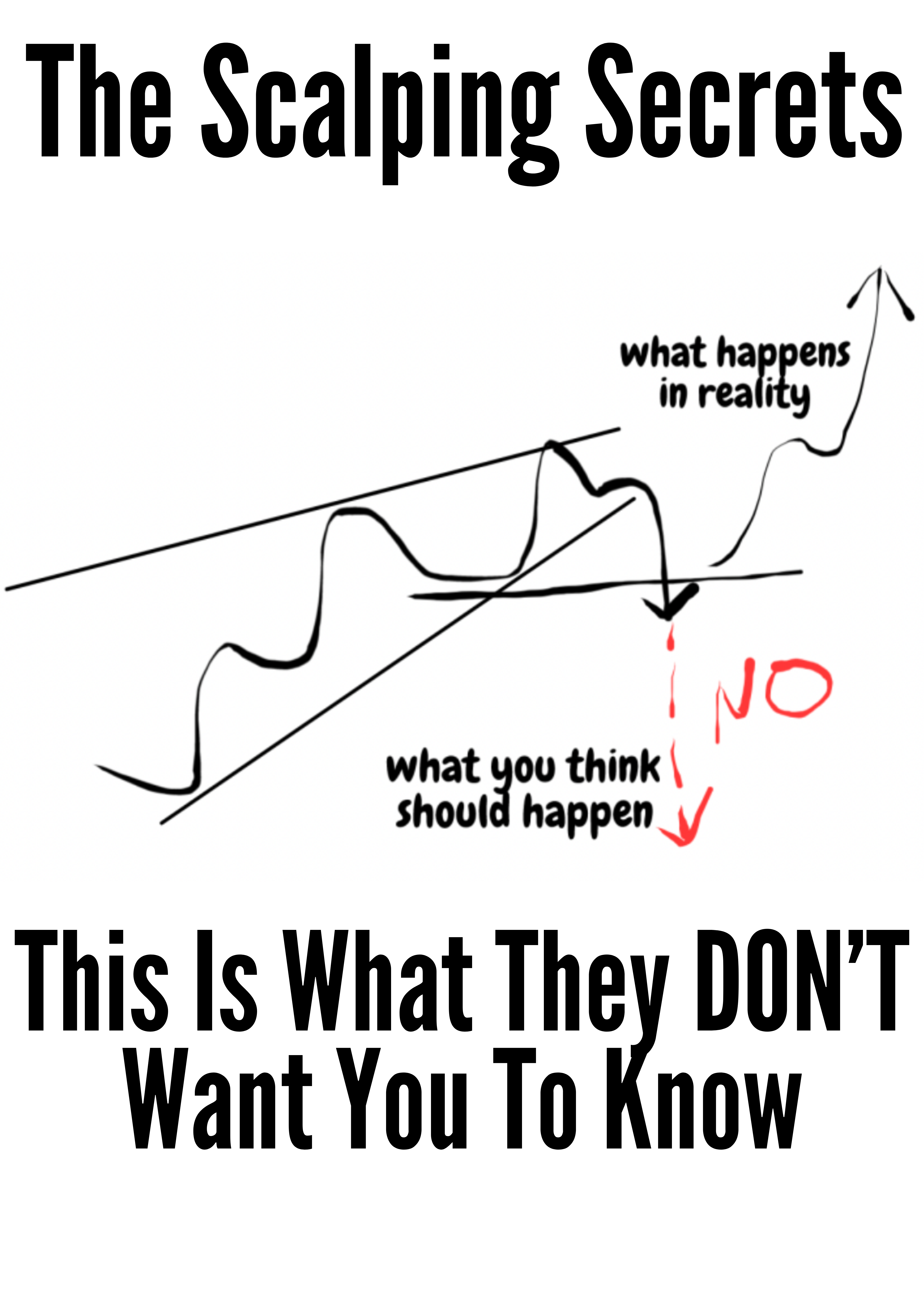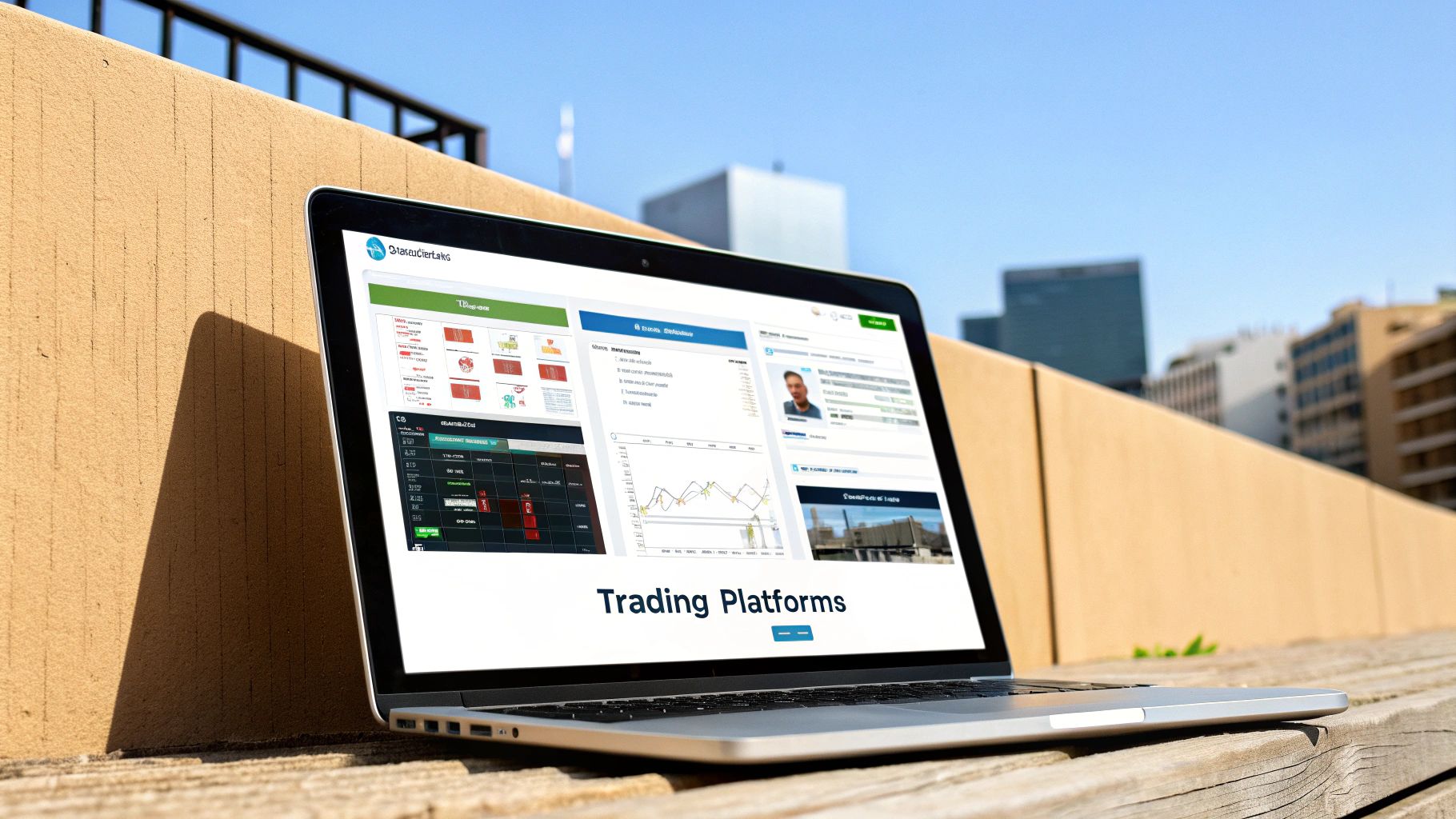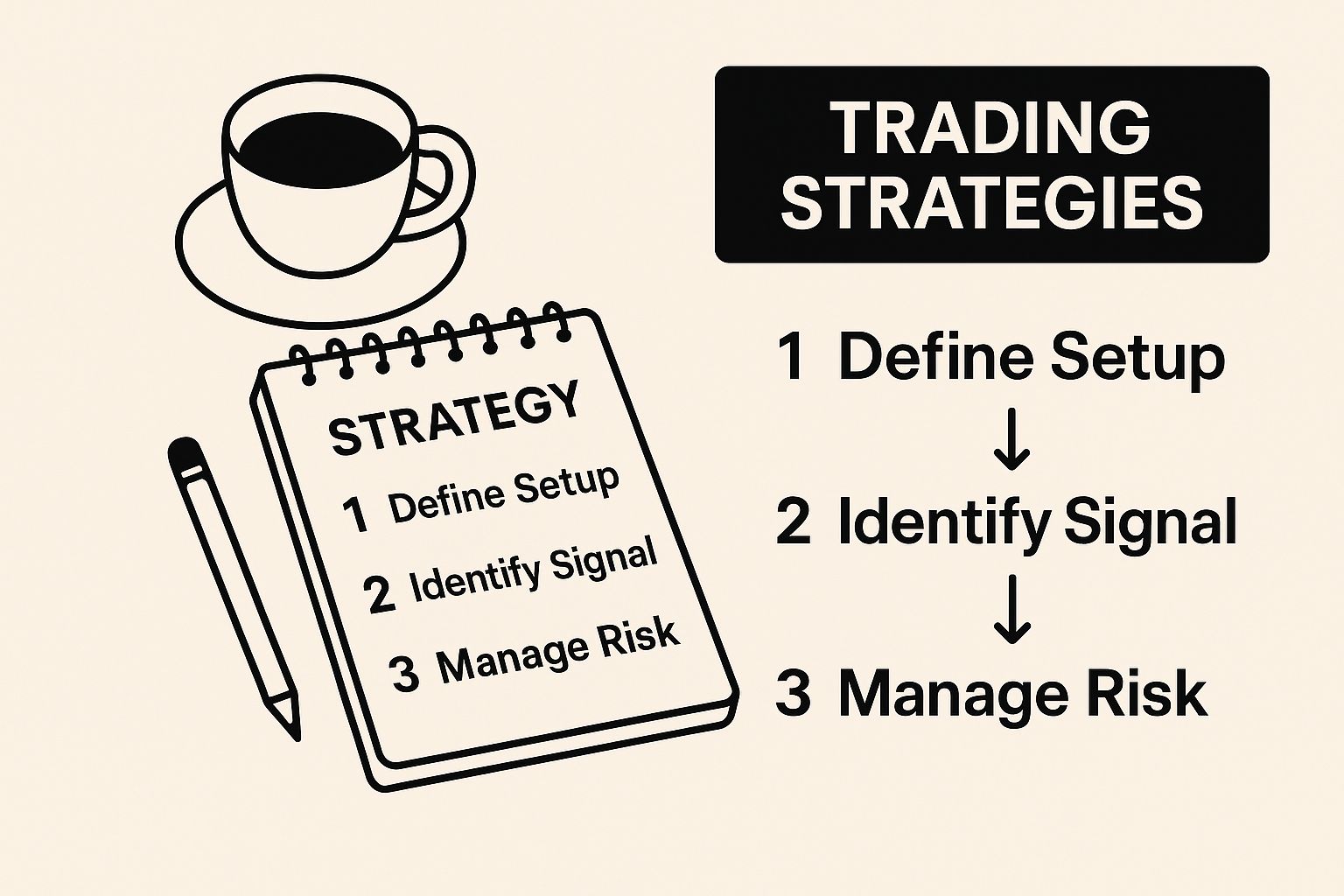How to Trade Pre Market Like a Pro
Trading in the pre-market means you're reacting to overnight news before the regular session even thinks about starting, usually between 4:00 AM and 9:30 AM ET. It's a whole different ballgame—you're dealing with thin liquidity and wild price swings. Success here hinges on carefully using limit orders to navigate the wide bid-ask spreads and sudden gaps.
Getting a Feel for the Pre-Market Environment
Before you even think about placing a trade, you have to get one thing straight: the pre-market session is not the same arena as regular trading hours. This isn't just about getting an early start. It's an environment with its own unique dynamics that can create massive opportunities but also carries significant risks.
The pre-market window in the U.S. typically fires up around 4:00 AM and runs until the opening bell at 9:30 AM Eastern Time. The defining characteristic of this session is its lower liquidity. Why? Because many of the big institutional players and market makers just aren't fully active yet. As Nasdaq points out, participation from these key players is completely voluntary during these hours, which is the main reason for the liquidity constraints.
Why Liquidity and Volume are a Big Deal
Low liquidity is the name of the game here. With fewer buyers and sellers in the market, the gap between what a buyer is willing to pay (the bid) and what a seller is willing to accept (the ask) gets much wider. This is what we call the bid-ask spread. A wide spread can put your trade at an immediate disadvantage because the stock has to move that much further in your favor just for you to break even.
This thin environment also means every trade has a bigger impact. A single large order can cause a dramatic price swing that would barely make a ripple during regular hours. This is the double-edged sword of pre-market trading: it creates the potential for quick, explosive gains but also opens you up to sudden, gut-wrenching losses. If you're new to the game, it's critical to understand the basics of what market volatility is and how it can affect your strategy.
Key Takeaway: The pre-market is a high-stakes game of reacting to news in a thin market. Success depends on understanding that low volume magnifies price moves, and wide spreads can erode profits if not managed carefully.
To put these differences into perspective, here’s a quick comparison of the two trading sessions.
Pre Market vs Regular Market Hours At a Glance
This table breaks down the fundamental differences you'll face when trading before the opening bell versus during standard market hours.
| Characteristic | Pre-Market Session (4:00 AM – 9:30 AM ET) | Regular Session (9:30 AM – 4:00 PM ET) |
|---|---|---|
| Liquidity | Low. Fewer participants lead to wider spreads and potential slippage. | High. Deep pools of buyers and sellers ensure tighter spreads and smoother execution. |
| Volatility | High. News-driven moves are amplified by low volume. | Moderate. Volatility is highest at the open and close but generally lower than pre-market. |
| Spreads | Wide. The gap between bid and ask prices is significantly larger. | Tight. High competition among market makers keeps spreads narrow. |
| Order Types | Limit orders are crucial. Market orders are extremely risky due to volatility. | All order types are viable. Market orders, limit orders, and stop orders are commonly used. |
| Data | Less reliable. Price action can be erratic and not always indicative of the regular session trend. | More reliable. Price and volume data provide a clearer picture of market sentiment. |
As you can see, the pre-market is a completely different beast. It’s not for the faint of heart, but for the prepared trader, it offers unique opportunities.
What Fuels the Pre-Market Action?
So, what’s actually driving these early morning moves? The action is almost always kicked off by events that happened after the previous day's market close.
Here are the usual suspects:
- Earnings Reports: Companies love to release their quarterly earnings either after hours or before the market opens, which can cause massive price gaps.
- Major News Events: Think FDA approvals for biotech firms, merger and acquisition announcements, or big geopolitical news. Any of these can send a stock or an entire sector flying—or crashing.
- Analyst Upgrades/Downgrades: When a well-respected analyst changes their rating on a stock, it grabs the attention of every early-bird trader out there.
Successfully navigating this landscape isn't just about spotting a stock that's moving. It’s about understanding why it's moving and figuring out if that catalyst has enough juice to carry momentum into the regular session.
Finding and Analyzing Pre Market Movers
Your entire pre-market game hinges on one skill: spotting the right stocks before the opening bell. The goal isn't just to find something that's moving; it’s to find stocks with real momentum, backed by a solid catalyst and, most importantly, meaningful volume.
This is all about separating the real opportunities from the noise. You need to learn the difference between a stock attracting genuine institutional interest and one that's just drifting aimlessly on thin volume—a classic trap that catches way too many new traders.
Using Scanners to Pinpoint Opportunities
Your most critical tool here is a pre-market stock scanner. This piece of software sifts through thousands of stocks based on criteria you define, handing you a curated watchlist of tickers that fit your strategy. Honestly, trying to trade this session without one is like flying blind.
When you're setting up your scanner, get specific with your filters. I like to focus on these three core settings:
- Price Range: I usually target stocks between $5 and $100. This helps me filter out the super-volatile penny stocks and the blue-chips that are too expensive for quick day trades.
- Minimum Volume: Set a floor, something like 100,000 shares, to make sure there's enough liquidity. A stock gapping up on a few hundred shares is a recipe for disaster.
- Percentage Change: I'm looking for stocks up or down at least 2-3%. This tells me there's already significant interest before most traders are even at their desks.
To really get ahead of the crowd, you need to act fast. One way to do this is to leverage real-time stock alerts, which can give you a heads-up the moment a stock starts ticking your boxes.
The screenshot above is a perfect example of what a good scanner looks like. It gives you a quick snapshot of the morning's action, highlighting stocks with both high volume and big price swings. You can immediately see which tickers are magnets for attention.
Just looking at that list, you can spot stocks trading millions of shares—that's a clear sign of strong interest. But you might also see a stock with a huge price gap but barely any volume. That’s not an opportunity; it’s a potential trap.
Separating Catalysts from Noise
Once your scanner flags a potential mover, your next job is to play detective and figure out why it's moving. A stock that’s gapping up for no apparent reason is a major red flag. Legitimate, sustainable pre-market moves are almost always tied to a concrete news catalyst.
You should be hunting for major announcements like:
- Earnings Beats: A company crushes its quarterly profit estimates.
- FDA Approvals: A biotech firm gets the green light for a new drug.
- Merger/Acquisition News: A buyout is announced, often at a premium.
Pre-market volume can explode into the millions when a strong catalyst hits the wires. For example, a stock like GIPR might trade over 4 million shares on great news, while a ticker like LAC could see 1.34 million shares change hands on a more modest update. Understanding these figures helps you gauge the strength behind the move.
Real-World Scenario: Let's say two biotech stocks pop up on your scanner. Stock A is up 15% on 2 million shares after announcing positive Phase 3 trial results. Stock B is up 10% on just 50,000 shares, and you can't find any news. Stock A is the high-probability play. Stock B is almost certainly a low-liquidity trap waiting to spring.
Once you’ve found a promising setup with a solid catalyst, it’s time to shift your focus to the chart itself and analyze the price action. This is where your chart reading skills really come into play. If you need to brush up, check out our guide on https://www.colibritrader.com/how-to-read-stock-market-charts/ to sharpen your analysis.
Executing Trades With Precision And Safety
Once your analysis has led you to a high-probability target, your focus has to shift completely to execution. How you get in and out of a trade during the pre-market is just as critical as the setup itself. Trust me, one wrong click or picking the wrong order type can flip a winning idea into a frustrating loss before the opening bell even rings.
The pre-market is a different beast. Its low liquidity makes it a dangerous place for certain order types, and market orders are your worst enemy. Slapping the "buy market" button on a volatile, thinly traded stock is a recipe for disaster. You'll likely get a terrible fill price—way off from what you saw on your screen. This is called slippage, and it can instantly put your trade in the red.
This is why you'll hear experienced traders harp on using limit orders. Prices can whip around violently in the pre-market, and you need to control your execution price. As Nasdaq's own pre-market insights show, the dynamics are just not the same as during regular hours.
The Power of Limit Orders
This is where limit orders become your most trusted tool. A limit order is simple: you tell your broker the exact price you’re willing to pay for a stock (a buy limit) or the exact price you’re willing to sell it at (a sell limit). Your order will only get filled at that specific price or a better one. No surprises.
Here's how I put them to work:
- For Entries: I'll set my buy limit at or just a hair above a key support level I've marked on my chart. This stops me from chasing a stock that’s already running.
- For Exits: My sell limit order goes right at my pre-planned profit target, which is usually a pre-market resistance level. This takes the emotion out of taking profits and ensures I stick to my plan.
Key Insight: Using limit orders is about enforcing discipline. It forces you to define your entry and exit points before you're emotionally invested in the trade, which is a cornerstone of consistently profitable trading.
The infographic below really drives home how a disciplined strategy—from analysis to execution—comes together.
It’s a great visual reminder that a successful trade isn’t a fluke; it's the result of a clear, repeatable process.
Setting Up Your Broker For Success
Before you even think about placing a trade, you have to make sure your brokerage account is actually set up for extended hours. It's a common rookie mistake to find a perfect setup only to discover you can't place the order. Most brokers require you to manually enable this feature and click through a risk disclosure.
Here’s what to look for in your broker's settings:
- Extended Hours Trading: Find this option in your account settings or trading preferences and make sure it’s switched on.
- Order Routing: Some platforms let you choose your ECN (Electronic Communication Network). You don't need to be an expert on this starting out, but it's good to know where the option is.
- Default Order Type: This is a big one. Set your default order type to "LIMIT". This simple change can save you from a very costly misclick.
Taking five minutes to double-check these settings will save you a world of frustration. Knowing how to trade the pre-market effectively starts with ensuring your tools are enabled and ready to go.
Taming Volatility: How to Manage Your Risk
Let’s be honest: trading the pre-market without a rock-solid risk plan is the fastest way to blow up your account. It’s like trying to drive a Formula 1 car without brakes.
This is where we talk about defense—the strategies that keep professional traders in the game long after the gamblers have gone home. In the thin, wild environment before the opening bell, one poorly managed trade can erase weeks of hard-earned gains. You have to be prepared.
Forget the generic advice you've read elsewhere. Your risk management has to be built specifically for the pre-market's unique personality. It all begins with your position size. Never, ever jump into a trade with a random number of shares. Your size must be a direct reflection of the stock's pre-market volatility and how much capital you have. A stock swinging 5% before the market opens requires a much, much smaller position than one that’s only moving 1%.
Setting Hard Stops and Realistic Targets
Before your finger even gets close to the buy button, you need to know exactly where you’re getting out. This isn't a suggestion; it's a rule. You need to set a hard stop-loss order the second you enter a position. This is your line in the sand—your non-negotiable exit if things go south.
So, where do you place it? The best spot is just below a key pre-market support level, like the session low or a clear price shelf where buyers have been stepping in. This gives your trade some breathing room without exposing you to a catastrophic loss. For example, if a stock is holding a strong floor at $50.50, your stop-loss might sit at $50.35, not just some arbitrary 1% below where you bought it.
Trader's Insight: A pre-market trader's first job isn't to make money—it's to protect capital. Every time you honor your stop-loss, you’re practicing financial self-defense. Cutting a small loss quickly isn't a failure; it’s a victory.
Just as critical is setting a profit target. Look for obvious areas of pre-market resistance, like the high of the session or a key level from the previous day. By placing a limit order to sell at that target, you automate your profit-taking. This simple action stops greed from turning a solid win into a frustrating loser. This is the kind of structured approach to managing trading risk that builds consistency over time.
Mastering the Psychology of Risk
At the end of the day, the most brilliant risk management plan is worthless if you don't have the psychological discipline to follow it. The pre-market is an emotional battlefield, and more often than not, your biggest opponent is staring back at you in the mirror.
Here are the mental rules of the road you have to live by:
- Never Revenge Trade: If you take a loss, shut down the platform. Walk away. Trying to "win it back" on the next trade is the single fastest way to zero out your account.
- Honor Your Stops, Always: Don't even think about moving your stop-loss further away from your entry price. That’s not a strategy; it's just hoping, and hope has no place in trading.
- Cut Losses Without Hesitation: The second your stop is hit, the trade is done. The faster you accept the small loss and move on, the clearer your head will be for the next real opportunity.
Becoming a master of the pre-market is less about finding that one perfect stock and far more about ruthlessly managing your losers. This defensive mindset is the true signature of a professional trader who not only survives but thrives, no matter what the market throws at them.
Putting Pre-Market Theory Into Action
Theory is great, but trading is about execution. Let's get our hands dirty and break down a couple of repeatable, actionable setups you can start paper trading tomorrow.
Two of my favorite pre-market plays are the classic "Gap and Go" momentum trade and the "Pre-Market High Breakout." Both give you a clear framework for finding real opportunities in that early session.
One thing you absolutely have to keep in mind when you trade pre-market is that your data feed might not be perfectly real-time. The price data you see from exchanges can sometimes be delayed by up to 15 minutes, which is an eternity when you're timing an entry. This session is all about sentiment, and as Nasdaq.com's pre-market data shows, it's not uncommon to see stocks making double-digit moves on overnight news before the opening bell even rings.
The Gap and Go Momentum Strategy
This is a bread-and-butter setup for many pre-market traders. The idea is to find stocks gapping up in a big way, with heavy volume, all because of some major news. You're basically looking to catch the first powerful wave of momentum right as the market opens.
Here’s what a high-quality Gap and Go setup looks like on my screen:
- A Real Catalyst: I’m not talking about a minor analyst upgrade. I’m looking for game-changing news—a massive earnings beat, FDA approval, a buyout offer. Something big.
- Huge Relative Volume: The stock has to be trading on multiples of its usual pre-market volume, at least 5-10 times the norm. This is your confirmation that the big institutions are paying attention.
- Clean Price Action: The stock should be holding most of its pre-market gains. Ideally, it's building a tight consolidation or a small flag pattern right near its pre-market highs.
The entry is the breakout above that consolidation pattern, usually within the first 5-15 minutes of the regular 9:30 AM EST session. Your stop-loss is placed just below the low of that consolidation, giving you a very clearly defined and manageable risk.
Let me paint a picture for you: Imagine a tech company, let's call it $XYZ, drops an earnings report that completely crushes expectations. It gaps up 18% in the pre-market, trading over 2 million shares when it normally does 200k. After the market opens, it chops between $110 and $112 for about ten minutes. A trader playing the "Gap and Go" would set an entry order to buy as soon as it breaks $112, with a protective stop-loss tucked under the consolidation at $109.80.
The Pre-Market High Breakout
This play is a bit different. It’s for stocks that have already made a strong move and might see some initial profit-taking at the open. Instead of jumping in right away, you exercise a little patience and use the pre-market high as your line in the sand.
The logic here is incredibly simple. If a stock can break above the absolute highest price it hit during the entire pre-market session, it's demonstrating incredible strength and has a high probability of continuing that upward push.
For this setup, you want to see the stock pull back a little after the opening bell, find its footing, and then make a run back at that pre-market high. The key is to see a big surge in volume as it breaks through. Your entry is the moment it punches through that level, and you can place your stop just below the most recent pivot low formed after the open.
A Few Words On Pre-Market Trading
Jumping into the pre-market session for the first time can feel a bit like stepping into the wild west. A lot of questions pop up, and getting clear answers is the only way to build real confidence and sidestep the pitfalls that catch so many traders off guard.
One of the first things traders ask is which stocks are even worth watching before the bell. It's actually pretty simple: you want to hunt for tickers that have a real catalyst and, most importantly, significant volume. Stocks that are moving in the pre-market are almost always reacting to something—overnight news, earnings reports, or some big geopolitical event. This is what causes those big price gaps and unusual volume spikes. You can find pre-market reports that flag these gappers, which gives you a ready-made watchlist of stocks reacting to fresh news. For a live look, check out Nasdaq's pre-market activity page.
Another big question is whether pre-market price action can actually predict what will happen in the regular session. It can give you some great clues, but it's definitely not a crystal ball.
Key Takeaway: Think of pre-market highs and lows as important reference points, not guarantees. I’ve seen countless times where a massive pre-market rally leads to a wave of profit-taking right at the 9:30 AM ET open, causing a sharp reversal.
What Are The Best Times To Trade?
The official pre-market window opens at 4:00 AM ET, but the real, tradeable action doesn't usually get going until much later. From my experience, the "golden hour" is between 8:00 AM and 9:30 AM ET. This is when liquidity really starts to pick up as more traders in North America come online, which means you get more stable price moves and much tighter bid-ask spreads.
Trying to trade before 8:00 AM ET is a risky game. You’re often dealing with:
- Erratic Price Swings: With so few people trading, prices can jump all over the place.
- Exaggerated Spreads: The gap between the bid and ask can be huge, making it tough to get a fair price.
- False Signals: A stock can look like it's taking off, but the move might be based on just a handful of shares.
Choosing The Right Broker
When it comes to trading before the bell, not all brokers are created equal. You need to make sure your platform is actually built for it. A key feature to look for is the ability to route your orders directly to various Electronic Communication Networks (ECNs). This can give you a real edge, sometimes leading to faster fills and better prices than you'd get otherwise.
But more than anything, make sure your broker's platform gives you rock-solid, real-time data. In a session where prices move in the blink of an eye, lagging quotes or volume data is a death sentence. Your ability to trade the pre-market effectively comes down to the quality of your tools, so go with a broker who prioritizes speed and data accuracy for active traders.
At Colibri Trader, we teach traders the price-action skills needed to navigate any market session with confidence. Start your journey to consistent profitability today.

